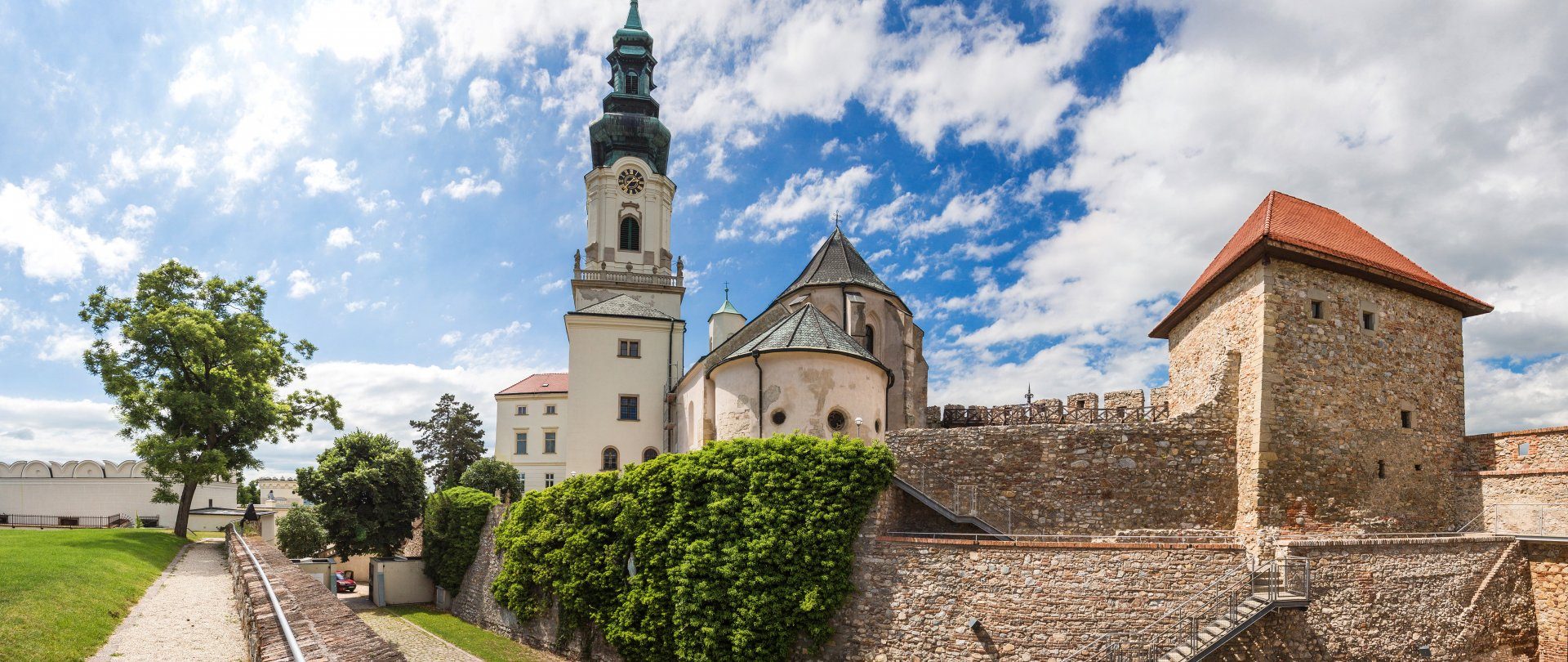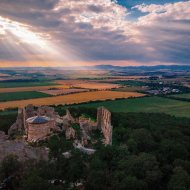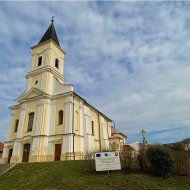Oponice castle
Human squabbling among the Apponycians caused that at the beginning of 17th century, the family decided to leave the castle because they could not agree about using the common parts of the castle. They simply left it to its fate. It started to decay and became a bastion of the insurgent army of Franz Rákoczi II in 1708, signing thereby the judgment of total decline. After the suppression of the rebellion by the Emperor's army it was, along with other Slovak castles, demolished and has been a ruin ever since.
In 19th century, it became a popular subject for writers, poets and painters who found peace and inspiration there. Of course, the Apponycians kept their patriotic attitude to the castle and thus kept it until the 1930s. After the World War II, it was sporadically maintained until around the 1960s. Oponice Rag days were held there, but this kind of events gradually vanished, the castle began to decay and became overgrown with self-seeding shrubs and trees.
Better times are to come to the castle – in the year 2000, a group of enthusiasts founded the Apponiana Civic Association to save the castle as the landmark of Oponice village and the whole region. Since then, the castle has been cleaned from hundreds of self-seedeers that have grown from the castle walls, slow down the destruction of the masonry, and by regularly mowing and destroying these harmful woods to prevent the continued decomposition of the castle premises. It is important to stress out the enormous effort and the unrelenting enthusiasm of a few people, who are not just faced with mother nature every year, but go even further and build the southwestern tower "Tereš", once the so important and strategic dominant of the castle. Its roofing is estimated to be completed in 2-3 years, and if this happens, it will be the first time since Rákoczi's rebellion that someone managed to do someting similar in the past 300 years.
There is a hiking trail leading from the village to the castle. At the entrance gate of the Great Manor Park in the village, there is a large information board about the castle with tourist information in 3 languages. The way from the village to the castle takes about 30 minutes. You will be rewarded with a majestic stone residence rising above from the Tribeč Mountains and a panorama of the valley from Zobor to Bánovce. The Oponice Castle is a great tourist attraction. As L. Janota said, with nostalgia marked by centuries, "its charred walls remind us of an old man who is confronted with the idea of complete extinction and looks down to the grave with resignation." We believe that the Apponiana civic society will change this gloomy credo of the 1930s into an optimistic new era of the castle. And as we read in the fairy tales: all evil will turn into good…!
18th-century church
The church was first mentioned in 1244. It was built probably during 12th century, its original proprietors were the Knights of Little Oponice. This Romanesque church covered by straws was demolished at the end of 18th century and a new classicistic church of St. Peter and Paul was created in 1793. Its glorious era began with the opening by the Bishop of Nitra, Francis Xavier Fuchs, and continued in the following years when Holy Masses in Oponice were celbrated by the members of "Societas Iesu" such as Hollý, Komlóssy, Kubicza or Valachy. The latter was criticized for the completion of a heavy stone tower – the church began to crack and some problems with statics occured. Since then, steel reinforcements in the ceiling elements of the church can be seen. There is a lot to learn about it from the parish records from the end of 18th and 19th century that a great chronicler and parish priest in one person, Jozef Lindenbauer, took notes about.
There is a rare single-manual organ in the church; Sofia Sztáray, the local countess, had it made. It was produced in 1869 by the organ master Ján Šaško from Brezová (1807-1893). The manual range of the organ is 54 keys, originally coated with ivory and ebony wood. The instrument has 620 pipes. There are still a few rare liturgical objects in the temple, such as the liturgical chalice from the Italian countess Teresia Nogarolly (1782-1852), wife of Anton Apponyi (1782-1852), and the 19th-century sacral garments made by Krickl & Schweiger Vienna company. The church bells are quite a rarity since they were installed in the year of the outbreak of World War I, which did not favour bells. The last bell came in 1925.
Below the church, there is a system of tombs of the Bartakovic and Apponyi families. However, only the Apponyi tomb is accessible to the public; its entrance is situated in the south courtyard of the church and was made available to the public in 1993. Organ concerts are also held in the church, where works of famous organ masters Bach, Händel or Bartholdy are performed. Other monuments of the church that are worth mentioning are an oratory in the south part of the church, and a sundial installed on the facade. The Apponyian coat of arms at the tomb entrance is also remarkable. It probably originates from Bratislava, the then Apponyi Palace, which served as a public Apponyi Library. After the abolition of the library, the coat of arms was taken from the facade and transported to Oponice where it was placed around 1846.











